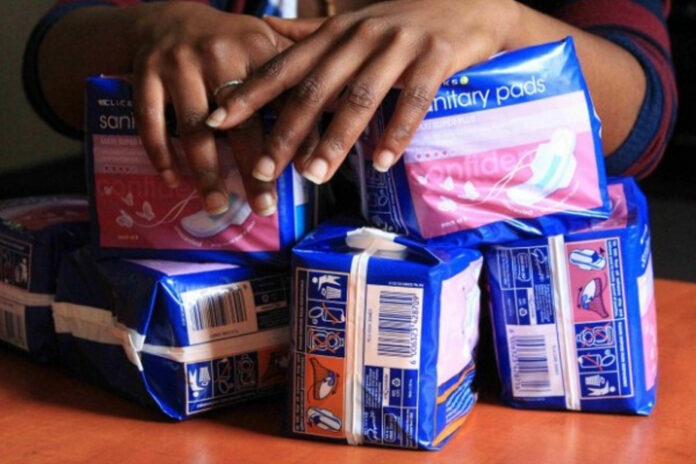Not so long ago, a 14-year old standard six girl in Bomet County died by suicide after she was embarrassed by her teacher for having her maiden period during class.
Jackline Chepng’eno committed suicide after she was overwhelmed by shame following the castigation and public shaming that her class teacher subjected her to in front of her fellow pupils. She was a pupil at Kabiangek Primary School in Konoin Constituency, Bomet County.
Chepng’eno’s unfortunate case resonated with the findings of a study by the University of Edmonton on water, sanitation and hygiene infrastructure for menstrual hygiene and the pain of period poverty in Kenya that many girls and women go through.
This study highlights the numerous challenges that menstruating school girls are facing in developing countries. It points out that apart from the provision of pads, there is need to align social and cultural values with menstrual hygiene.
“Deeply embedded socio-cultural values and beliefs around menstrual hygiene management still need to be addressed in order to provide truly supportive school environments for menstruating girls,” said DrPH Mami Sommer who led the study report.
“There is urgent need for strategies that will identify the root cause of poor menstrual infrastructure and ensure facility designs are sensitive to the needs of girls.”
The study on girls aged 16 to 19 years also established that a poorly maintained, girls-unfriendly school menstrual program is a result of gender-insensitive design, a cultural devaluation of toilet cleaners and inadequate governing practices.
“Traditional menstrual management practices force girls to withdraw from many daily routines. For example, schools are often not the most hospitable space for menstruating girls, and further analysis of our data suggests that the most logical step for most girls is to stay at home for the first 2-3 days of menses,” said DrPH Sommer. These menstrual findings were published in the Journal of Adolescence.
By May 2018, the national initiative that was aimed at providing free sanitary towels for Kenyan girls had reached more than 11 million primary school girls since 2011.
But the Ministry of Health estimates that more than half of Kenyan girls have challenges with access menstrual hygiene products like pads.
In worst cases, school –going girls have been reported to be trading sex for pads, with 10 per cent of girls in western Kenya reported in 2015 and 65 per cent of women in Kibera in 2011.
Also, the Menstrual Health Management Policy for 2019-2030 by the Ministry of Health estimates that up to 65 per cent of all Kenyan women have difficulties accessing sanitary pads. The expenditure involved will also vary depending on the intensity of the menstruation.
Is your spouse, sibling, friend, neighbour having depression and you’re unaware?
“Women do not have uniform menstruation across board. There are women who will have light flow that ends within two to three days and others who will experience heavy flow. There are also others who spot for a longer periods. This means that the expenditure towards sanitary hygiene is more costly for some women,” says Obstetrician Gynecologist Dr. Janet Thuthwa.
According to a 2014 study that was published in the British Journal of Medicine and Medical, an average woman who menstruates will use up to 17,000 sanitary pads in her lifetime, making menstruation a very costly affair.
“Pads should be free. For a natural involuntary process, they can be expensive,” cites clinical medic Wandia Muthui on her social media platform. She illustrates this with two light and heavy flow cost implications:
Woman A:
Light flow: Two to four days.
Pads consumption rate: 3 pads per day for two days and 3 panty liners per day for two days.
Brand of pad: Sunny girl at Sh. 60 for pack of 10 pads.
Panty liners: Sh. 150 for a pack 20 liners.
Estimated budget for one menstrual cycle: About Sh. 100. (Sh. 1,200 per year)
Woman B:
Heavy flow: Four to seven days.
Pads consumption rate: 6 maxi thick long pads per day or more for 5 days. 3 light flow pads per day for 2 days and 3 panty liners per day for 2 days.
Brand of maxi pads: Always at Sh. 100 for a pack of seven.
Light flow pads: Sh. 100 for a pack of seven.
Panty liners: Sh. 150 for a pack of 20.
Estimated budget per month: About Sh. 700. (Sh. 8,400 per year)
“These estimates are the cheapest options in terms of prices, knowledge on how to use and availability, and based on a regular flow with the shortest cycle of 21 days,” she says.
“Assuming a woman earns Sh.7, 000 per month, Sh. 1, 000 or 14 per cent of her salary goes to pads if she has a high flow without other added costs such as pain relief medications for cramps, and inconveniences such as missing school and work, and vomiting.”
In 2017, the Basic Education Amendment Act was assented into law, requiring the national government to provide free, quality, and sufficient sanitary pads to every puberty-aged girl in a public basic education school.
However, the Ministry of Education estimates that girls lose on average four school days every month. This translates to two weeks of learning each term. Over four years of high school, they lose on average 165 learning days.








